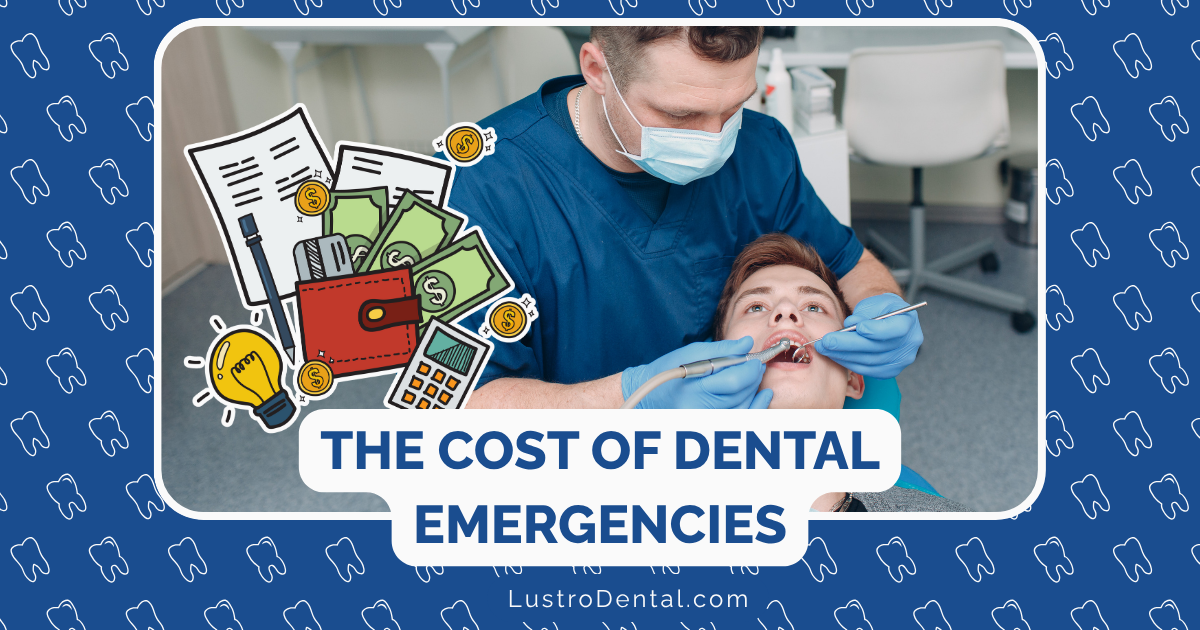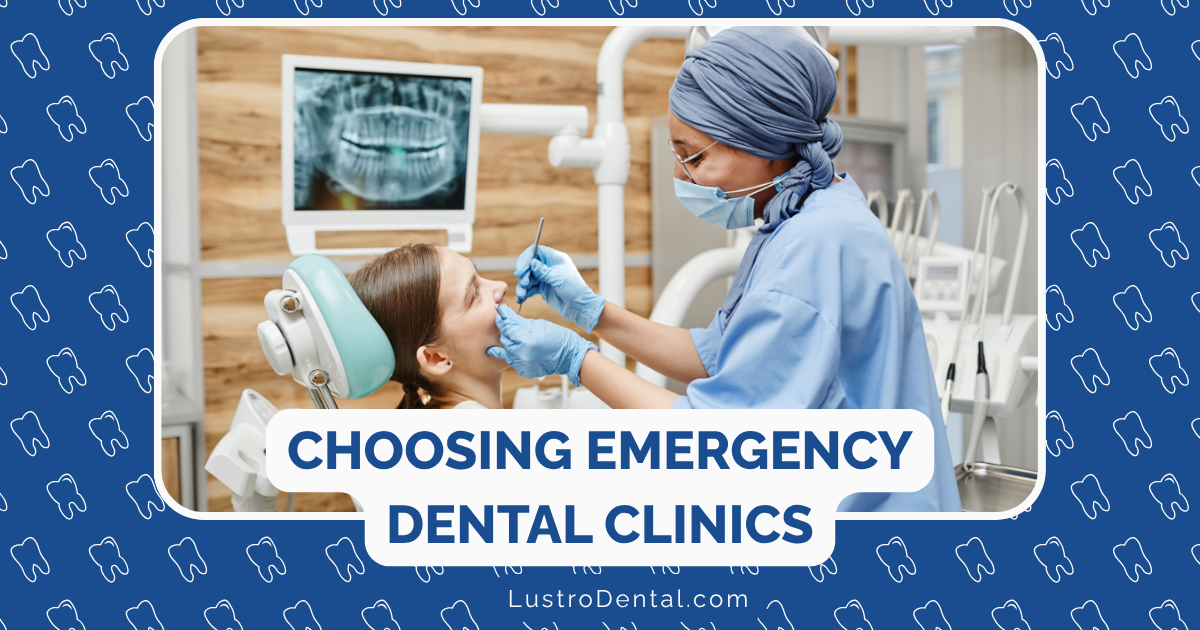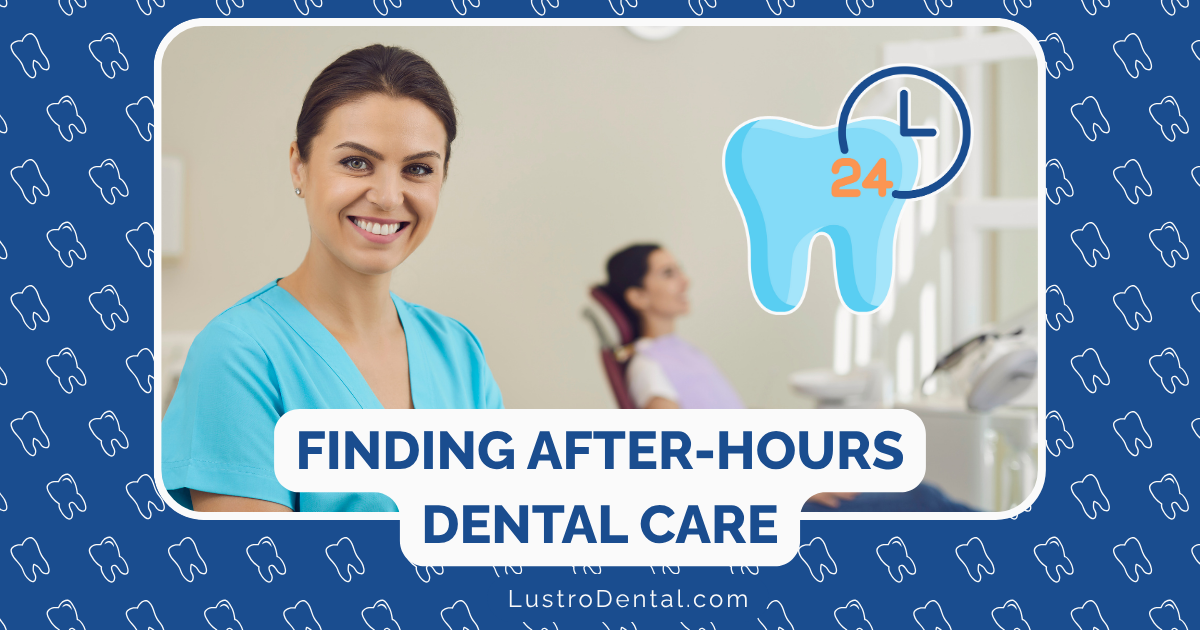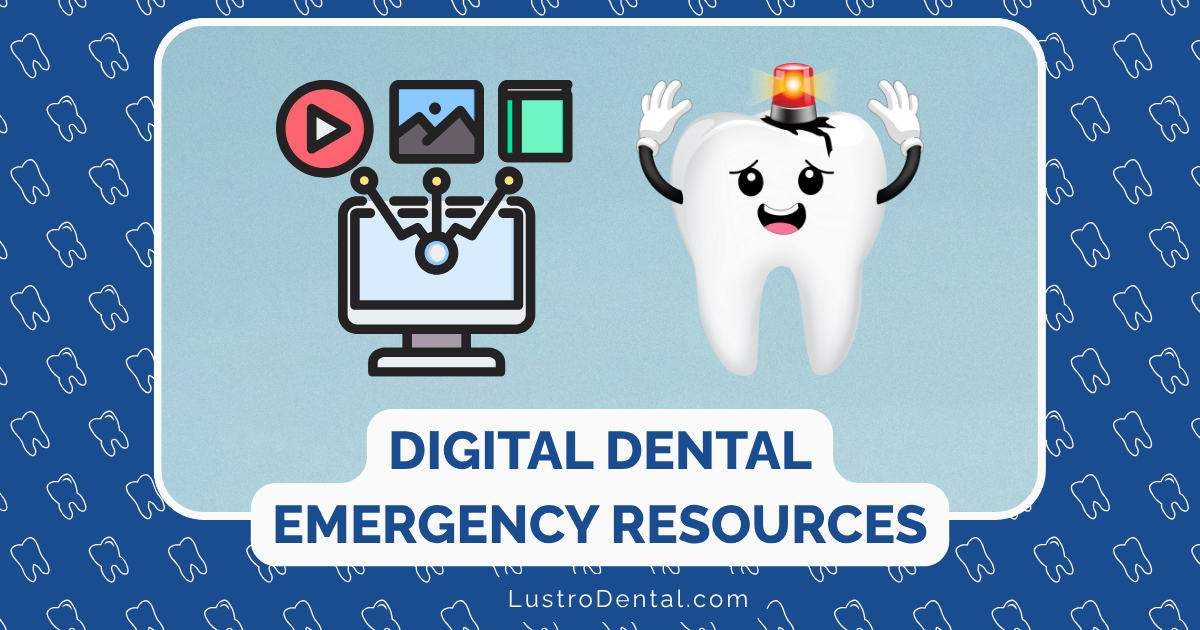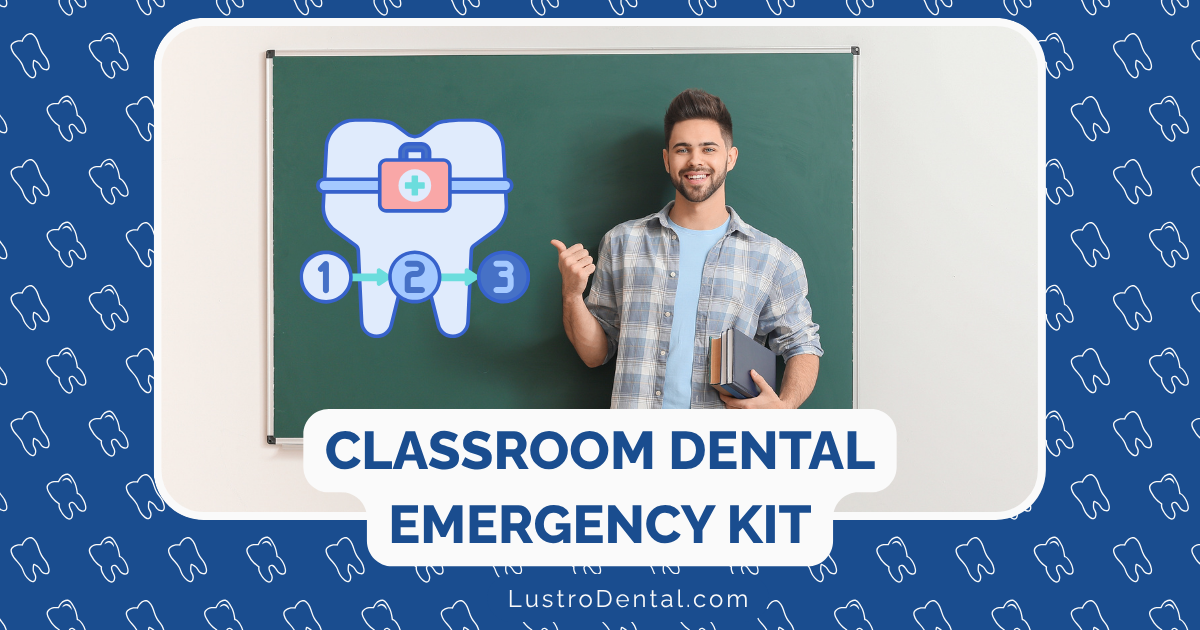ER vs. Emergency Dentist: Making the Right Choice in a Crisis
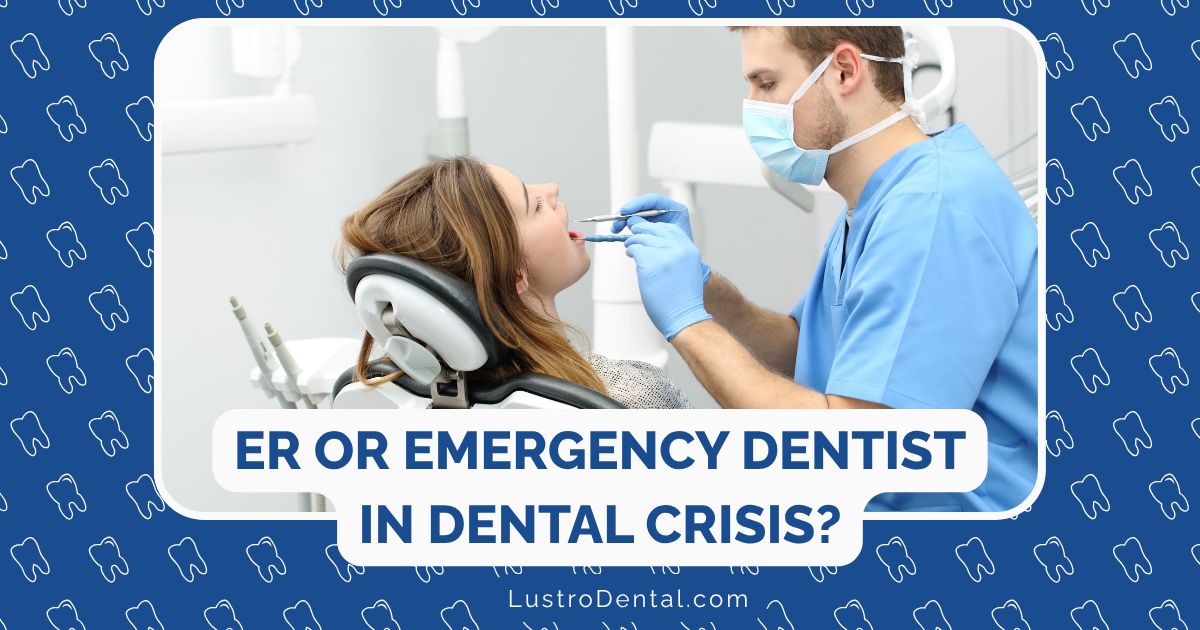
It’s 2 AM, and you’re in excruciating pain from a throbbing toothache that’s kept you awake for hours. Or perhaps your child has just fallen and knocked out a front tooth during weekend sports. Maybe you’ve developed facial swelling that seems to be getting worse by the hour.
In these moments of dental crisis, a critical question arises: Should you head to the nearest emergency room or seek out an emergency dentist?
This decision isn’t just about convenience—it can significantly impact your treatment outcome, recovery time, and financial situation. As someone who’s helped countless patients navigate dental emergencies, I’ve seen firsthand how making the right choice in these moments can make all the difference.
Let’s explore when to choose an emergency room versus an emergency dentist, so you can make informed decisions during those stressful moments when clear thinking is most difficult.
Understanding the Fundamental Differences
Before diving into specific scenarios, it’s important to understand the key differences between emergency rooms and emergency dental clinics:
Emergency Rooms (ERs)
Strengths:
- Open 24/7/365
- Equipped to handle life-threatening situations
- Can address severe trauma to the face and jaw
- Able to manage dangerous infections and bleeding
- Have access to advanced imaging (CT scans, etc.)
- Can administer IV medications and fluids
Limitations:
- Most ERs don’t have dentists on staff
- Limited ability to perform dental procedures
- Focus on pain management and infection control, not definitive dental treatment
- Typically more expensive than dental offices
- Often longer wait times for non-life-threatening conditions
- May need to follow up with a dentist anyway
Emergency Dentists
Strengths:
- Specialized in dental procedures and treatments
- Equipped specifically for dental emergencies
- Can provide definitive treatment (not just temporary relief)
- Generally less expensive than ERs
- More focused experience with dental issues
- Can perform procedures like extractions, root canals, and repairs
Limitations:
- May have limited hours (though many offer after-hours services)
- Not equipped for life-threatening situations
- May not be able to handle severe trauma cases
- Limited ability to administer certain medications
- Might not be available in all areas
Dr. Michael Roberts, emergency medicine specialist at University Medical Center, explains: “Emergency rooms and emergency dentists have complementary roles in healthcare. Understanding which facility is appropriate for your specific situation ensures you receive the right care without unnecessary delays or expenses.”
When to Choose the Emergency Room
Certain dental emergencies warrant immediate medical attention at an emergency room. These situations typically involve:
1. Severe Trauma to the Face or Jaw
If you’ve experienced significant trauma to your face, jaw, or mouth—especially from accidents, falls, or physical altercations—the emergency room should be your first choice.
Signs that indicate an ER visit is necessary:
- Suspected jaw fracture (inability to close mouth properly, visible deformity)
- Deep cuts to the face, lips, or inside the mouth requiring stitches
- Impact trauma that might affect other structures beyond teeth
- Dislocation of the jaw
- Severe bleeding that doesn’t stop with pressure
Dr. Lisa Wong, oral and maxillofacial surgeon at Trauma Dental Institute, advises: “Facial trauma often involves more than just dental issues. Emergency rooms have the resources to assess potential concussions, cervical spine injuries, and other serious conditions that might accompany dental trauma.”
2. Signs of Serious Infection
Dental infections can sometimes spread beyond the mouth and become life-threatening. Head to the ER if you notice:
- Significant swelling that extends to the eye, neck, or affects breathing
- Fever above 101°F (38.3°C) accompanied by dental pain
- Difficulty swallowing or breathing
- Extreme lethargy or confusion alongside dental symptoms
- Rapid onset of swelling over hours rather than days
According to the American Dental Association, dental infections that spread can lead to serious conditions like Ludwig’s angina or cavernous sinus thrombosis, which can be life-threatening without prompt medical intervention.
3. Uncontrolled Bleeding
While some bleeding is normal after dental procedures or injuries, excessive or uncontrollable bleeding requires emergency medical attention:
- Bleeding that doesn’t stop after applying pressure for 15-20 minutes
- Bleeding accompanied by dizziness or weakness
- Patients on blood thinners experiencing significant bleeding
- Bleeding that repeatedly restarts after appearing to stop
4. No Access to Emergency Dental Care
Sometimes, the decision is made for you by circumstance:
- You’re in a location without emergency dental services
- It’s a holiday or weekend when no dental offices are open
- You’ve called available emergency dentists and none can accommodate you
In these situations, an emergency room can provide temporary relief until definitive dental care is available.
When to Choose an Emergency Dentist
For many dental emergencies, an emergency dentist is better equipped to provide the specific care you need:
1. Severe Toothache Without Systemic Symptoms
Intense tooth pain is one of the most common dental emergencies, and in most cases, an emergency dentist is your best option when:
- Pain is severe but localized to the tooth or surrounding area
- There’s no significant facial swelling extending beyond the immediate area
- You don’t have fever or systemic symptoms
- Over-the-counter pain medications provide insufficient relief
Emergency dentists can diagnose the cause—whether it’s a deep cavity, cracked tooth, or pulpal inflammation—and provide definitive treatment like fillings, root canals, or extractions.
2. Knocked-Out (Avulsed) Tooth
When a permanent tooth is completely knocked out, time is critical. The American Association of Endodontists reports that teeth replaced within 30 minutes have the best chance of survival.
An emergency dentist is typically better equipped to:
- Properly clean and prepare the tooth socket
- Reimplant the tooth in its correct position
- Splint the tooth to adjacent teeth for stability
- Provide appropriate antibiotics and follow-up care
Important note: While seeking emergency dental care, keep the knocked-out tooth moist by placing it in milk, saline solution, or tucked inside your cheek if you’re able. Never scrub the tooth or touch the root portion.
3. Broken, Chipped, or Cracked Teeth
Damaged teeth that aren’t associated with serious facial trauma are best handled by emergency dentists, who can:
- Assess the extent of the damage
- Determine if the tooth can be saved
- Perform appropriate repairs (bonding, crowns, etc.)
- Address any exposed nerves or pulp
- Provide cosmetic solutions for visible teeth
4. Lost Fillings, Crowns, or Other Dental Work
When existing dental work fails, an emergency dentist can:
- Replace or temporarily repair lost fillings
- Recement or replace crowns and bridges
- Address any sensitivity or pain from exposed tooth structure
- Repair broken dentures or orthodontic appliances
5. Dental Abscess Without Spreading Infection
A dental abscess (infection) that’s localized to the gum area around a tooth is best treated by an emergency dentist who can:
- Drain the abscess properly
- Determine if the tooth can be saved with root canal therapy
- Extract the tooth if necessary
- Prescribe appropriate antibiotics
- Provide definitive treatment for the underlying cause
Dr. Sarah Johnson, endodontist at Advanced Dental Care, notes: “While emergency rooms can provide antibiotics and pain management for dental abscesses, they typically can’t address the source of the infection. This often results in recurrence of the problem unless followed by proper dental treatment.”
What to Expect at Each Facility
Understanding what happens at each type of facility can help you prepare for your emergency visit:
At the Emergency Room
If your dental emergency takes you to the ER, expect:
- Triage assessment: Your condition will be evaluated for severity and prioritized accordingly
- Medical history review: Be prepared to share information about allergies, medications, and health conditions
- Pain management: Typically through oral or IV medications
- Infection control: Antibiotics if infection is present or suspected
- Possible imaging: X-rays or CT scans if trauma is involved
- Temporary measures: Such as controlling bleeding or draining an abscess
- Referral: You’ll likely be referred to a dentist for definitive treatment
- Discharge instructions: Guidelines for managing your condition until you can see a dentist
At an Emergency Dental Clinic
When visiting an emergency dentist, you can typically expect:
- Focused dental assessment: Specific evaluation of your dental issue
- Dental X-rays: To diagnose the problem accurately
- Definitive treatment: Procedures to address the underlying cause
- Local anesthesia: To manage pain during treatment
- Prescriptions: For pain or infection as needed
- Follow-up plan: Instructions for aftercare and any needed additional appointments
- Prevention guidance: Advice to prevent similar emergencies in the future
Cost Considerations: A Significant Factor
The financial implications of your choice can be substantial:
Emergency Room Costs
- Average cost without insurance: $750-$3,000+ for a dental-related visit
- With insurance: Typically subject to your ER copay and deductible
- Additional costs: Follow-up dental care will still be needed in most cases
Emergency Dental Clinic Costs
- Average cost without insurance: $200-$1,000 depending on treatment needed
- With insurance: May be partially covered depending on your dental plan
- Payment options: Many emergency dentists offer payment plans or financing
According to a study published in the Journal of Public Health Dentistry, dental-related ER visits cost the U.S. healthcare system more than $2 billion annually, with many patients receiving only temporary relief rather than definitive treatment.
Making the Decision: A Practical Guide
When faced with a dental emergency, use this decision-making framework:
Step 1: Assess the Severity
Go to the ER if:
- You have difficulty breathing or swallowing
- You have severe swelling extending to the eye, under the jaw, or down the neck
- You’ve experienced significant trauma to the face or jaw
- You have uncontrolled bleeding
- You have a high fever along with dental pain
Choose an emergency dentist if:
- Your emergency is limited to teeth, gums, or dental appliances
- Pain is severe but not accompanied by systemic symptoms
- You’ve lost or damaged a tooth or dental work
- You have a dental abscess without spreading infection
Step 2: Consider Timing and Availability
Go to the ER if:
- It’s outside normal business hours and no emergency dentists are available
- The situation feels too urgent to wait for a dental appointment
- You’re traveling in an area without emergency dental services
Choose an emergency dentist if:
- One is available within a reasonable timeframe
- Your condition is stable enough to wait for an appointment
- You’ve called ahead and confirmed they can treat your specific issue
Step 3: Prepare for Your Visit
For either facility:
- Bring a list of current medications and allergies
- Have your insurance information ready
- Bring someone with you if possible
- Document your symptoms (when they started, what makes them better/worse)
Real-World Scenarios: Making the Right Choice
Let’s apply this decision-making process to common emergency scenarios:
Scenario 1: Severe Toothache at Night
Situation: It’s 11 PM and you have intense tooth pain that’s keeping you awake. No visible swelling, no fever, but over-the-counter pain relievers aren’t helping.
Best choice: Call emergency dental services first. Many areas have after-hours dental clinics or dentists who take emergency calls. If none are available, manage with over-the-counter pain medication until morning unless the pain becomes unbearable or new symptoms develop.
Why: This situation, while painful, isn’t life-threatening. Emergency dentists can provide definitive treatment, whereas an ER would likely only provide pain management.
Scenario 2: Knocked-Out Tooth During Weekend Sports
Situation: Your teenager gets hit in the mouth during Saturday’s soccer game and a permanent front tooth is completely knocked out. No other injuries are apparent.
Best choice: Properly store the tooth (in milk or saliva) and immediately seek emergency dental care. Many emergency dentists reserve slots for true emergencies like this one, even on weekends.
Why: Time is critical for saving the tooth, and emergency dentists are specifically equipped for reimplantation.
Scenario 3: Facial Swelling with Difficulty Swallowing
Situation: You notice increasing swelling on one side of your face originating from a painful tooth. By evening, you’re having difficulty swallowing and feel feverish.
Best choice: Go to the emergency room immediately.
Why: This suggests a spreading infection that could compromise your airway—a potentially life-threatening situation requiring immediate medical intervention.
Scenario 4: Broken Dental Crown Before a Business Trip
Situation: Your dental crown breaks off while eating dinner. It’s not painful, but the exposed tooth feels rough and sensitive to temperature.
Best choice: Contact an emergency dentist for a same-day or next-day appointment.
Why: While uncomfortable, this situation isn’t medically urgent. Emergency dentists routinely handle these cases and can provide temporary or permanent solutions.
Preparing Before an Emergency Happens
The best time to decide where to go in a dental emergency is before one occurs:
- Research emergency dental options in your area, including hours and services
- Program emergency contact numbers into your phone
- Understand your insurance coverage for both dental emergencies and ER visits
- Create a basic dental first aid kit with supplies like gauze, a small container for a knocked-out tooth, and over-the-counter pain relievers
- Discuss emergency protocols with your regular dentist
- Consider dental emergency insurance if you’re at higher risk (children in sports, etc.)
Conclusion: Being Informed Makes All the Difference
Dental emergencies are stressful enough without the added uncertainty of where to seek care. By understanding the distinct roles of emergency rooms and emergency dentists, you can make confident decisions that lead to better outcomes, faster relief, and often significant cost savings.
Remember that emergency rooms excel at managing life-threatening situations, severe trauma, and spreading infections, while emergency dentists provide specialized care for most dental problems—often with more definitive results and at lower costs.
When in doubt, many emergency dental services offer phone consultations that can help guide your decision. The most important thing is not to delay seeking care when you’re experiencing a dental emergency.
Have you experienced a dental emergency? Where did you seek treatment, and what was your experience? Share your story in the comments to help others prepare for these challenging situations.


